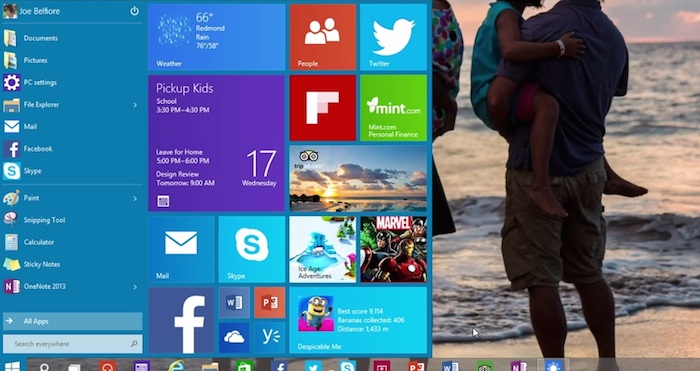During the event, WinHEC Microsoft stressed what are the system requirements to run Windows 10, both for desktop devices for mobile devices.
Windows 10 will not be starved of resources is a matter clear to all insiders who have tried at the outset of the first Technical Preview of the system. Microsoft continues to work in the wake of last Windows 8 that, although it was not appreciated in terms of the interface, proved a pleasant surprise in terms of performance even on low-end machines equipped.
But what are the minimum system requirements for Windows 10? A report it was Paul Reed, Senior Program Manager at Microsoft, during the WinHEC event held last week. The Microsoft executive stressed what will be the characteristics of the PC, smartphone or tablet for this to be able to run the new operating system and deliver an experience of use of reference, by the standards of Microsoft.
We start from the computer: the operating system requires at least a resolution of 800 x 600 pixels and a minimum of 7″ for the display. The computer must support UEFI firmware 2.3.1 and SecureBoot, and on the hardware front will have 1 GB of RAM and 16GB of integrated storage for the 32-bit, 2 GB of RAM and 20 GB of storage for the operating system versions in 64-bit. It also required the support for DirectX 9, while the Start button for locking the physical and are optional.
Windows 10 will also have native support for an extensive list of external sensors, as specified by the same company last week. It is an opening unprecedented in the Windows environment, with the next personal computer that will take the example from smartphones and tablets, and will deliver user experience even more complete and specific. Microsoft has stressed that it will not be implemented no support for voice communications via the cellular network.
As is the case now, in essence, even if we connect a device with a cellular radio, this will only be used for the processing of data, and not of the voice. Windows 10 natively support new hardware including the new Qualcomm Snapdragon 208, 210, 615, 808 and the top of the range 810, the new Intel Cherry Trail, Skylake and Atom x3, and the new AMD Carrizo and Carrizo-L. Some of these will be introduced on mobile devices, of which Microsoft has specified what will be the minimum requirements.
To run Windows 10, smartphones and tablets will support firmware 2.3.1 with UEFI Secure Boot and should incorporate at least 512 MB of RAM and 4 GB of storage. In case one chooses the minimum for the storage space, it is necessary the presence of a microSD slot for storage expansion. The device must support DirectX 9 and include a button for ignition and traditional selectors for the volume. The capacitive buttons are needed only for the devices with WVGA display.
Supported several video resolutions, but each must be accompanied by a certain minimum amount of RAM. If you run Windows 10 on a device WVGA (800×480) are indispensable at least 512 MB of RAM, it takes at least 4 GB for a device to 2,560 x 2,084 resolution (QSZGA) or higher.
Both on PC and smartphone, Windows 10 is installed on devices with technical features extremely compact. On the desktop we can say that they are directives especially for OEMs, while on the smartphone Microsoft has tried to lower the bar in order to deliver an operating system to test emerging market and facilitate the conversion from Android device to Windows Phone for manufacturer’s third parties.



